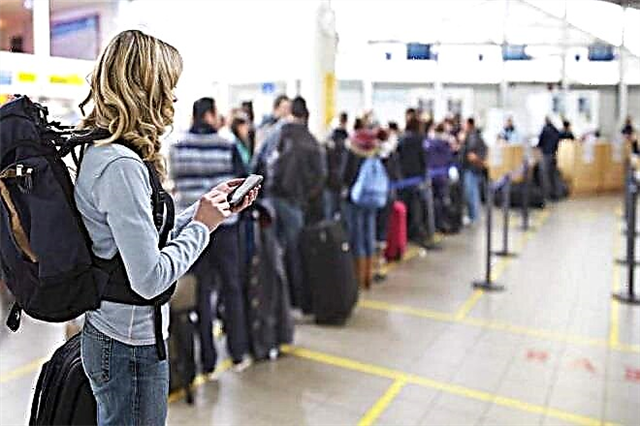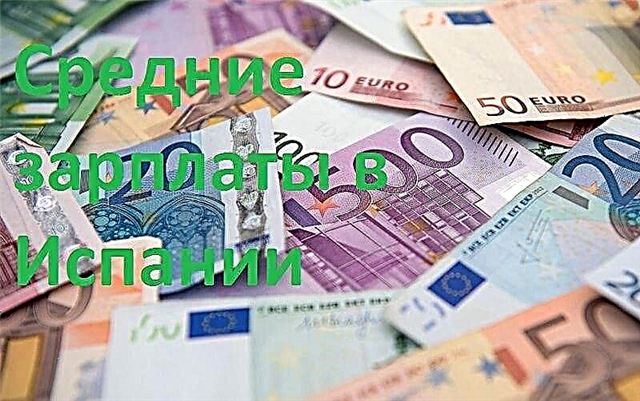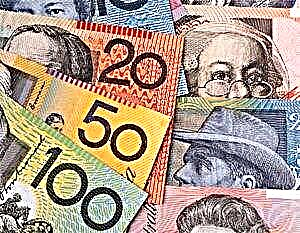Australia's current currency is the Australian dollar. It is very popular with financial traders. This trend is due to the stability of the country's economy, combined with the relative absence of government intervention in the foreign exchange market. Other money, besides the Australian dollar, on the territory of the Green Continent can be found only in specialized exchangers and banks. According to the international standard ISO 4217, the Australian dollar is designated as AUD.

A little about the history of money in Australia
Australia has long had the status of a British colony. Therefore, after gaining independence, pounds were in circulation on its territory. But not the United Kingdom, but the Australian ones. They were replaced by dollars in 1966. Thus, the national currency of Australia was originally duodecimal, and then became decimal.
Interestingly, the introduction of a new monetary unit in the middle of the last century prompted Prime Minister Robert Menzies to make an original decision - to call it The Royal. For a short time, the inhabitants of the Green Continent used money under such an authentic name.
 However, practice has shown that this is not the best option. Therefore, the monetary unit in Australia was renamed from The Royal into the word Dollar, familiar to the ear of any of our contemporary. It acquired the status of a floating currency in 1983, and before that it was pegged to the British pound.
However, practice has shown that this is not the best option. Therefore, the monetary unit in Australia was renamed from The Royal into the word Dollar, familiar to the ear of any of our contemporary. It acquired the status of a floating currency in 1983, and before that it was pegged to the British pound.
Coins and banknotes
The Australian dollar accounts for 5% of foreign exchange transactions in the global financial market. It now ranks 6th in the list of the most traded currencies.
Therefore, any tourist planning to visit the Southern Hemisphere may have a question: where is the Australian dollar used. To find out the answer, it is enough to study this list:
- Australia;
- Coral Sea Islands;
- Christmas Island;
- Tuvalu is a state in Polynesia;
- Heard Island and McDonald's Islands;
- The Republic of Nauru is a dwarf state in the western part of the Pacific Ocean;
- Norfolk Island;
- Cocos Islands;
- the Pacific state of Kiribati;
Returning to the question of what currency is in Australia, let's say that at the moment both coins and banknotes are in circulation in the country. Monetary funds of the first type were originally issued in denominations of 1, 2, 5, 10, 20 and 50 cents.
The dollar coin was introduced in 1984, and the $ 2 coin was introduced in 1988. You can see them below.




In 1991, coins in denominations of 1 and 2 cents were withdrawn from circulation.
Currently, there are banknotes in denominations of 5, 10, 20, 50 and 100 dollars on the Green Continent.
Let's note one important detail: paper money in Australia ceased to be issued by the Reserve Bank of the country (an analogue of the domestic Central Bank) in 1988. Since that time, plastic bills have appeared in circulation.
Biaxially oriented polypropylene is used as a raw material for their manufacture. And, although the manufacturing process is more expensive compared to paper money, this technical solution has the following advantages:
- the service life of plastic banknotes is much longer;
- the properties of polypropylene prevent the bills from absorbing dirt, sweat and moisture, that is, they remain cleaner.
Below are images of the smallest and largest denomination plastic banknotes in circulation in the Commonwealth of Australia.
First the $ 5 bill:


On its obverse there is a portrait of Queen Elizabeth II. The reverse side shows the old and modern buildings of the Australian Parliament.
A $ 100 bill looks like this:


The obverse of the $ 100 bill bears an image of Nelly Melba, an opera singer who sang the national anthem before the opening of Parliament in Canberra. On the back you can see the portrait of John Monash - administrator, engineer and soldier. His signature is on the right side of the image.
Exchange rates in Australia
All experienced travelers are well aware that the acquisition of a sufficient amount of currency of the country to which it is planned to travel is one of the important organizational issues. In this case, the task is to make a purchase at the optimal rate.
Find out what you can buy in Australia as a gift from the article “Shopping tour to Australia: what to bring for yourself, family and friends”.
To find out the approximate range of buying / selling the Australian dollar before leaving, while in Russia, just visit the Central Bank website cbr.ru/currency_base/daily/. For example, the current exchange rate against the Australian dollar in January 2021 is 43.3835 AUD.
But you most likely will not see this figure in the quotes of organizations involved in currency conversion. To buy 1 AUD from them, you will have to pay 5 percent more.
And if you bring the currency of the Green Continent from your trip to your homeland, then when exchanging for Russian rubles for 1 AUD, you will receive less by the same 5%.
Where and what currency can be exchanged in Australia
The Reserve Bank of Australia website (rba.gov.au) contains quotes for currencies of many countries, from the United States to Papua New Guinea, but the AUD / ₽ rate is not indicated. Obviously, difficulties may arise with the exchange of Russian monetary units on the Green Continent.
It is recommended to pre-exchange ruble savings intended to finance travel to Australia into dollars: if not into Australian, then at least into American dollars.
And you will need to convert US dollars at one of the exchange offices immediately upon arrival at the airport. After all, from the air harbor of the same Sydney, you will have to get to the city center by public transport or by taxi, the services of which are paid for in local money.
You should know that currency exchange in Australia at a more attractive US dollar to Australian dollar rate is offered not by small exchange offices, but by bank branches. It is also not very profitable to carry out conversion in exchange offices of hotels.
 All international bank cards are accepted on the territory of the Green Continent. True, carrying out calculations with their help is not a cheap pleasure, since up to 15% of the commission can be charged. In addition, you can exchange and cash your existing currency into Australian dollars through the extensive ATM network of ATMs.
All international bank cards are accepted on the territory of the Green Continent. True, carrying out calculations with their help is not a cheap pleasure, since up to 15% of the commission can be charged. In addition, you can exchange and cash your existing currency into Australian dollars through the extensive ATM network of ATMs.
Traveler's checks are rarely accepted in Australia. But they can be cashed in banks. However, in this case, high commissions are charged.
Take a sociological survey!
FAQ
Let's consider the most frequently asked questions of Russians and try to give exhaustive answers to them.
How much money to bring to Australia and what currency is better to take
You can import into the country any currency in the amount not exceeding $ 5,000 (almost 7,400 AUD). If a tourist, when passing through customs, has more Australian dollars and banknotes of another state, they will need to be declared.
The answer to the question of how much money to take to Australia depends on the planned time of stay on the Green Continent. According to experienced travelers, a 10-day trip will require about 2,950 USD.
Below is an estimated cost estimate in US dollars:
- Flights within the country - 60.
- Accommodation in a 4-star hotel 10 days / 9 nights - 630.
- Food - 900.
- Insurance policy for 10 days - 20.
In addition, the travel budget includes:
- Self-registration of a tourist visa - 100.
For details on the possible types and subspecies of Australian visas, the required documents, the cost of registration and the timing of obtaining, read the article "Visa for CIS citizens to Australia: types, procedure and cost of registration".
- Flight from Russia to Australia.For example, a ticket for a flight from Moscow to Sydney costs about 1200 on average.
- Transfers - 40.
 You can take US dollars and euros in cash. It will not be difficult to exchange them in Australia for the local currency.
You can take US dollars and euros in cash. It will not be difficult to exchange them in Australia for the local currency.
But in any case, you should not bring money from post-Soviet states: rubles, tenge, and hryvnia in Australia are not accepted for exchange.
What is better to take with you to Australia - a bank card or cash
In Australia, cards with and without embedded chips are accepted for payment. You can use MasterCard and Visa Classic from Sberbank. But, so that the account is not blocked, you should warn your bank in advance about the country in which payments will be made through the card. By the way, in some cities of Australia you can order a taxi equipped with terminals that work with Sberbank payment cards.
It is better to have several types of cards with you. The fact is that some trade enterprises do not accept all of their varieties.
To avoid any difficulties, it is necessary to have about 50 AUD in cash with you: in many Australian shops you can pay by card only for purchases that cost more than 15 AUD.
You will also need cash to buy food in the markets. In Melbourne, the most popular is the Queen Victoria market. In the hot climate of Australia, both tourists and locals enjoy deliciously refreshing berries and fruits.
Conclusion
The share of transactions of buying / selling the Australian dollar accounts for 1/20 of the total number of world transactions with foreign exchange. It is also necessary to note the positive dynamics of the rate of this monetary unit.
When planning a trip to Australia, it is optimal to take with you 2-3 different bank cards and a small amount in Australian dollars. The rest of the funds (in US dollars) are more profitable to convert upon arrival, at the branches of Australian banks.
It can be difficult to exchange Russian rubles in Australia.











